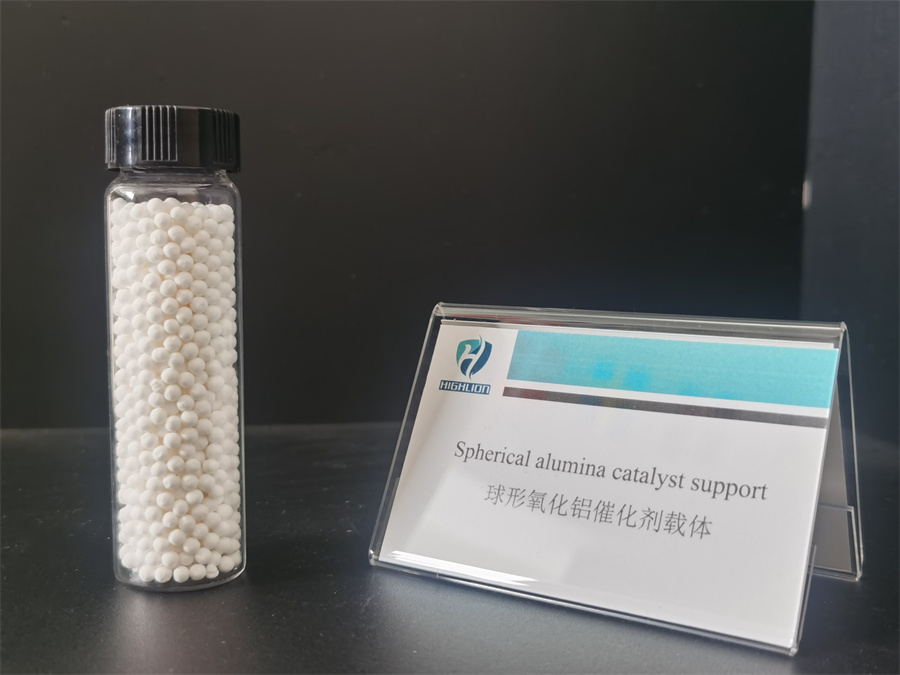Spherical alumina catalyst supports

Spherical Alumina Catalyst Supports
1.Basic Concept
Spherical alumina is a catalyst support material primarily composed of aluminum oxide (Al₂O₃) with a regular spherical structure. Its unique physical and chemical properties make it widely applicable in catalysis, adsorption particularly in petroleum refining, environmental protection, and energy-related fields.
2.Structure and Properties
The advantages of spherical alumina support from its microstructure and chemical composition:
– High specific surface area (100–400 m²/g): A porous structure provides abundant active sites, enhancing catalyst loading efficiency.
– Controlled pore size distribution: Tailored microporous (<2 nm), mesoporous (2–50 nm), or macroporous (>50 nm) designs to accommodate different reactant molecule sizes.
– Excellent thermal stability: Withstands high temperatures (up to 1200°C), suitable for high-temperature catalytic reactions (e.g., methane reforming).
– Chemical inertness: Stable in acidic or alkaline environments, resistant to reactions with active components (e.g., Pt, Ni).
– High mechanical strength: Compressive strength >50 MPa, reducing wear and fragmentation in industrial fluidized-bed reactors.
3.Synthesis Methods
Preparation techniques critically influence performance. Common methods include:
– Sol-gel method:
Hydrolysis of aluminum salts (e.g., aluminum nitrate) forms a sol, which is aged, dried, and calcined into spherical particles.
Advantages: Controllable pore size, high purity; Disadvantages: Complex process, high cost.
– Spray drying:
Atomization and rapid drying of alumina precursor solutions to form microspheres.
Advantages: Suitable for mass production; Disadvantages: Low porosity.
– Oil droplet method (oil column forming):
Aluminum sol droplets are solidified in an oil phase and calcined into spheres.
Advantages: High sphericity, uniform pores; Disadvantages: Requires organic solvents, poor environmental friendliness.
4. Applications
– Petrochemicals:
– Hydrotreatment (e.g., diesel desulfurization), catalytic cracking (FCC catalyst supports).
– Methane dry reforming (DRM) with Ni/Co loading to improve carbon resistance.
– Environmental protection:
– Automotive exhaust treatment (Pt/Pd/Rh ternary catalysts for CO and NOx degradation).
– Catalytic oxidation of volatile organic compounds (VOCs).
– Chemical synthesis:
– Fischer-Tropsch synthesis (Fe/Co-loaded for liquid fuel production).
– High-pressure reactions (e.g., ammonia/methanol synthesis).
5. Advantages:
– High surface area and porosity enhance catalytic efficiency.
– Spherical geometry reduces reactor pressure drop and optimizes fluid dynamics.
– Thermal/chemical resistance prolongs catalyst lifespan.

